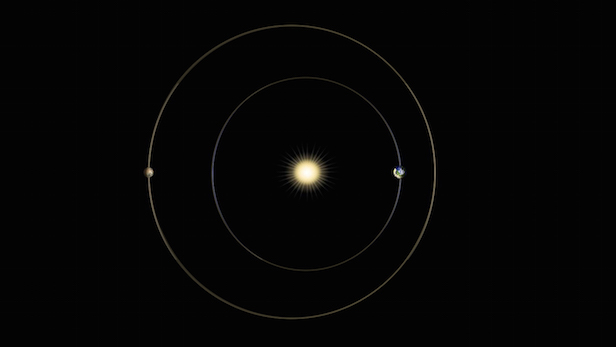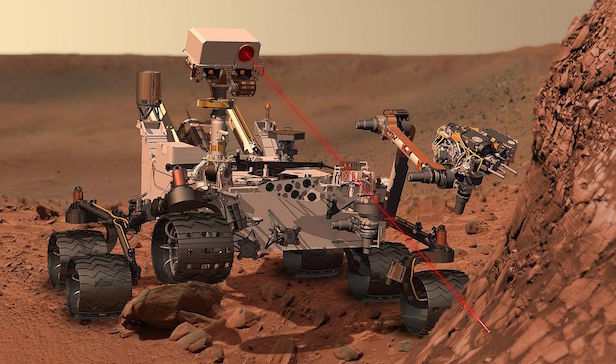NASA momentarily ceases communication with Mars orbiters and rovers
This month, movements of the planets will put Mars almost directly behind the Sun, from Earth’s perspective, causing curtailed communications between us and the Red Planet
This month, movements of the planets will put Mars almost directly behind the Sun, from Earth’s perspective, causing curtailed communications between Earth and Mars.
NASA will refrain from sending commands to America’s three Mars orbiters and two Mars rovers during the period from 22 July through to 1 August.
“Out of caution, we won’t talk to our Mars assets during that period because we expect significant degradation in the communication link, and we don’t want to take a chance that one of our spacecraft would act on a corrupted command,” says Chad Edwards, manager of the Mars Relay Network Office at NASA’s Jet Propulsion Laboratory (JPL), Pasadena, California.
Data will keep coming from Mars to Earth, although loss or corruption of some bits is anticipated and the data will be retransmitted later. “We will continue to receive telemetry, so we will have information every day about the status of the vehicles,” Edwards says.
As seen from Earth, Mars periodically passes near the Sun about every 26 months, an arrangement called “Mars solar conjunction.” During most solar conjunctions, including this year’s, Mars does not go directly behind the Sun.
Viewers using proper eye protection to watch the total solar eclipse on 21 August will gain a visible lesson in why Mars doesn’t need to be directly behind the Sun for communications between Earth and Mars to be degraded. The Sun’s corona, which always extends far from the surface of the Sun, becomes visible during total eclipses. It consists of hot, ionised gas, which can interfere with radio waves that pass through it.
To prevent the possibility of the ionised gas near the Sun corrupting a command radioed to a spacecraft at Mars, NASA avoids transmitting for a period including several days before and after Mars gets closest to passing behind the Sun.

This diagram illustrates the positions of Mars, Earth and the sun during a period that occurs approximately every 26 months, when Mars passes almost directly behind the sun from Earth’s perspective. Image Credit: NASA/JPL-Caltech
Teams that operate Mars orbiters and rovers have been preparing for weeks in anticipation of the moratorium that will begin on 22 July.
“The vehicles will stay active, carrying out commands sent in advance,” says Mars Program Chief Engineer Hoppy Price, of JPL. “Orbiters will be making their science observations and transmitting data. The rovers won’t be driving, but observations and measurements will continue.”
The rover teams are determining the most useful sites for the rovers Curiosity and Opportunity to remain productive during the solar-conjunction period.
All of NASA’s active Mars missions have experience from at least one previous solar conjunction. This will be the eighth solar conjunction period for the Mars Odyssey orbiter, the seventh for the Opportunity rover, the sixth for the Mars Reconnaissance Orbiter, the third for the Curiosity rover and the second for the MAVEN orbiter.
Edwards says, “All of these spacecraft are now veterans of conjunction. We know what to expect.”
NASA’s five current Mars missions, plus Mars missions scheduled for launches in 2018 and 2020, are part of ambitious robotic exploration to understand Mars, helping to lead the way for sending humans to Mars in the 2030s.
Keep up to date with the latest space news in All About Space – available every month for just £4.99. Alternatively you can subscribe here for a fraction of the price!





